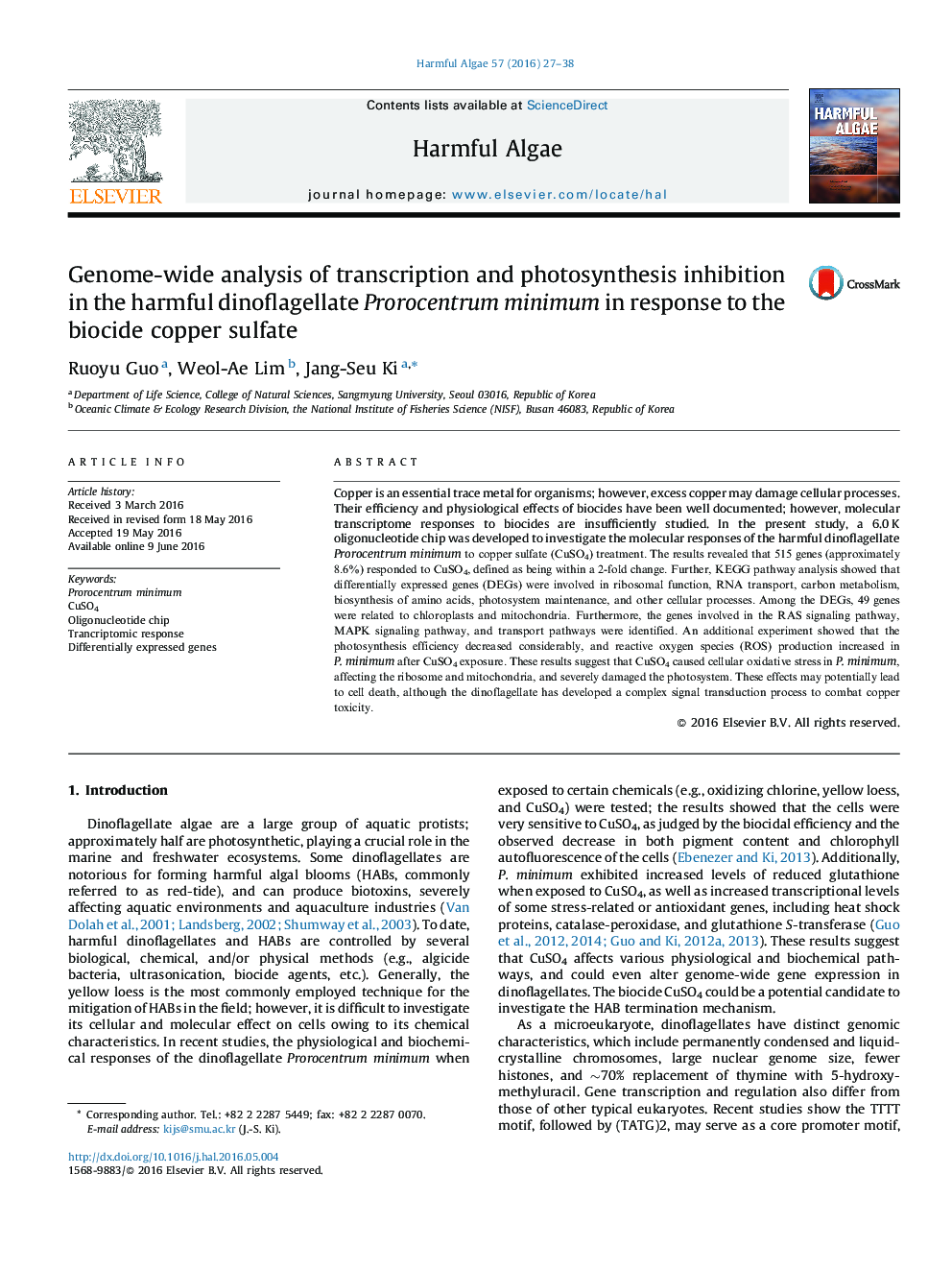| کد مقاله | کد نشریه | سال انتشار | مقاله انگلیسی | نسخه تمام متن |
|---|---|---|---|---|
| 4545182 | 1327422 | 2016 | 12 صفحه PDF | دانلود رایگان |
• Microarray analysis revealed 515 genes responded to CuSO4 in P. minimum.
• Among differentially expressed genes, 49 genes (9.5%) are related to chloroplast and mitochondria.
• Genes for ribosome, transport, and signal transduction pathways were significantly involved.
• Photosynthesis of P. minimum was considerably inhibited by copper sulfate.
Copper is an essential trace metal for organisms; however, excess copper may damage cellular processes. Their efficiency and physiological effects of biocides have been well documented; however, molecular transcriptome responses to biocides are insufficiently studied. In the present study, a 6.0 K oligonucleotide chip was developed to investigate the molecular responses of the harmful dinoflagellate Prorocentrum minimum to copper sulfate (CuSO4) treatment. The results revealed that 515 genes (approximately 8.6%) responded to CuSO4, defined as being within a 2-fold change. Further, KEGG pathway analysis showed that differentially expressed genes (DEGs) were involved in ribosomal function, RNA transport, carbon metabolism, biosynthesis of amino acids, photosystem maintenance, and other cellular processes. Among the DEGs, 49 genes were related to chloroplasts and mitochondria. Furthermore, the genes involved in the RAS signaling pathway, MAPK signaling pathway, and transport pathways were identified. An additional experiment showed that the photosynthesis efficiency decreased considerably, and reactive oxygen species (ROS) production increased in P. minimum after CuSO4 exposure. These results suggest that CuSO4 caused cellular oxidative stress in P. minimum, affecting the ribosome and mitochondria, and severely damaged the photosystem. These effects may potentially lead to cell death, although the dinoflagellate has developed a complex signal transduction process to combat copper toxicity.
Journal: Harmful Algae - Volume 57, Part A, July 2016, Pages 27–38
